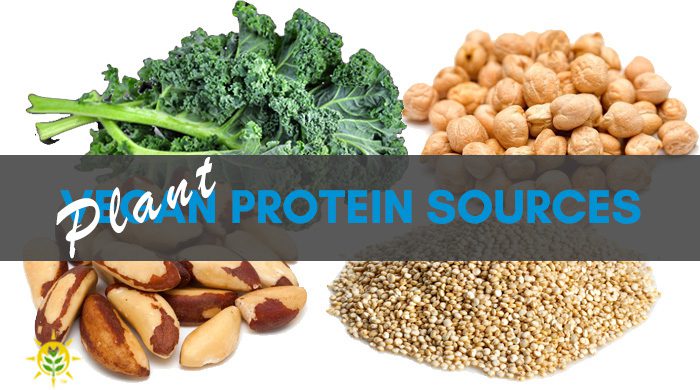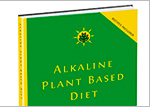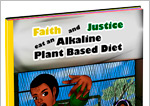Find Your Plant Protein Sources Here – Dr. Sebi Nutritional Guide

Plant Protein Sources
Find your plant/vegan protein sources on the Dr. Sebi nutritional guide, here.! Look no further! Many people have the misconception that only meat can supply you with the recommended daily allowance of protein.
Many people don’t know that there are plant protein sources and that plants contain protein. Plants contain nitrogen-based compounds, which have been termed “proteins,” and their composition is better for the body than the composition of meat protein.
(Note: Dr. Sebi doesn’t promote the notion of protein. Analyzing his position, it was a stance against the meat industry’s push to make “protein” the most important nutrient, to promote sale and consumption of meat. I agree with his position. As far as the nutrient compound is concerned, proteins are just nitrogen concentrated compounds. The body does use these compounds, but they are not the most important nutrients the body needs to support optimal health and vitality. Scientific studies show that the body only 10% of a recommended daily diet of 2000 calories should be from nitrogen based compounds (proteins) Please read my Alkaline Plant Based Diet book to gain a comprehensive understanding.)
What Is Plant Protein?
Plant/vegan protein is a nitrogen-based compound. The scientific community also refers to protein as amino acids. The body uses these nitrogen-based compounds to build and repair muscles, bones, blood cells, hair, skin, nails, and tissues.
The human body also uses these nitrogen-based compounds to make enzymes, hormones, and antibodies. The body also uses them to transport nutrients to the cells, and to regulate water.
Plant protein is made up of varying combinations of 20 different amino acids, and our bodies can make eleven of the twenty amino acids. People depend on getting the other nine amino acids from the foods they eat. These nitrogen-based compounds are called “essential amino acids” because the body doesn’t manufacture them.
Some of the combinations of amino acids form nitrogen-based compounds like keratin. This compound is found in skin, hair and nails. Hemoglobin carries oxygen throughout the body, and myosin helps muscles to contract.
It is important to get all the nine essential amino acids from the diet, which is easily obtainable from a well balanced vegan diet.
Learn More About the Alkaline Plant Foods on the Dr. Sebi Nutritional Guide »
How Much Protein Do We Need?
Science supports that people only need 10 percent of a recommended 2000 total daily calories to be from protein. A plant based diet easily supplies that percentage.
The recommended daily allowance for both men and women is .8 grams of protein for every kilogram, or .37 grams of protein for every pound of body weight.
Under this guideline a person weighing 170lbs should eat 63 grams of vegan protein a day. You can check if you are consuming the daily recommended allowance of vegan protein by using the NLE Vegan Protein Calculator.
The better measurement for determining the amount of protein needed is 10% of 2000 calories consumed daily.
Research suggests that women who are pregnant should eat and extra 20 grams of protein a day, and weightlifters should eat twice the recommended amount.
People who eat eat a plant based diet should not have any problem getting 10% of their total daily calories from vegan protein sources. Plant protein is in vegetables, fruits, nuts, seeds, and legumes.
All plant-based wholefoods (vegetable, fruits, nuts/seeds, legumes, grains) contain some amount of vegan protein. In general, legumes, nuts, seeds, and grains contain a higher amount of protein per gram than do vegetables and fruits.
People who are concerned with maximizing their plant protein consumption should increase their consumption of these plant/vegan protein sources. “What do vegans eat for protein?” Your answer is below.
Plant Protein Sources Chart
Vegetable Protein “Greens” |
Fruit Protein |
Nut/Seed Protein |
Legume Protein |
Grain Protein |
| Amaranth Avocado Chayote Chlorella Cucumber Dandelion Green Kale Lettuce Mushrooms Onions Okra* Tomatoes (cherry and plum) Turnip greens Watercress Zucchini |
Apple Banana (Burro and smaller bananas) Cantaloupe Figs Grapes (seeded) Orange (sour orange) Papaya Peaches Pears Strawberries* Watermelon (seeded) |
Brazil Nuts Hemp seeds Sesame seeds Walnuts |
Garbanzo beans | Amaranth Kamut Quinoa Rye Spelt Tef Wild rice |
Concentrated Plant Protein Sources
| Referenced from the USDA Nutritive Value of Foods guide – 2012 | ||
Food |
Amount |
Protein (grams) |
| Amaranth (cooked) | 1 cup | 9.3 |
| Brazil Nuts | 1cup | 19 |
| Chickpeas (cooked) | 1 cup | 15 |
| Hemp Powder | 100 grams | 35 |
| Quinoa, cooked | 1 cup | 9 |
| Rye (uncooked) | 1 cup | 24.9 |
| Sesame Seeds | 1 cup | 25.5 |
| Spelt (cooked) | 1 cup | 10.7 |
| Tahini (Sesame Seed Paste) | 1 Tbsp | 2.6 |
| Teff (cooked) | 1 cup | 9.8 |
| Walnuts | 1 cup | 18 |
| Wild Rice | 1 cup | 6.5 |
References:
Happy Cow
WebMD – Guide to a Healthy Kitchen
Wikipedia – Spirulina (dietary supplement)
USDA – Nutritive Value of Foods
What are proteins and what do they do?
Tags: protein, vegan protein, vegan protein sources






